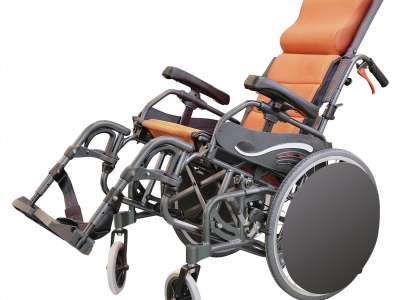
Reviewing this book on behalf of PMG has given me the opportunity to reflect on my clinical skills and knowledge, and to consider the technological advances being made in wheelchair engineering.
The foreword of the book states that it is aimed at both “new and seasoned clinicians” and, in my opinion, the content delivers on this. The book does offer differing levels of detail for clinicians, depending on their experience, skills, and prior knowledge, but has chapters that are of relevance to both students and clinical experts.
Set out as in the 6 sections below, the information is presented in a logical order, moving from theory to clinical needs, suggesting possible wheelchair solutions for specific client groups:
- Postural support and pressure management: foundational information
- Postural support and pressure management
- Wheeled mobility: foundational information
- Wheeled mobility: clinical applications
- Putting it together: speciality applications
- Additional considerations
Each section is subdivided, with every chapter having a summary. Reading the summary first can give an insight into the contents and scope of the chapter.
There are chapters that will be very informative to those with limited experience of specific client groups – paediatrics, the aging population, degenerative neurological conditions, bariatric patients and wheelchair provision for clients with co-morbidities. However, there are noticeable differences in the writing styles of each contributor, as every chapter is written by a different author. At times this affects the flow of information in the book.
In addition, the reader needs to be aware that many of the references and research projects are more than 5 years old.
With advances in medical care, and the resulting increase in life expectancy, the needs of each client group are constantly changing, but the change is often insidious, so that intervention can sometimes be delayed until permanent changes have occurred. For example, research showed that by 20 years post injury, the incidence of pressure ulcers in those with spinal injuries had increased by 30%. This is partly attributable to the ageing process, sweating, fat decrease, and capillary walls getting thinner meaning they are more prone to rupture.
However, for me, the most powerful chapter focussed on the mobility needs of the bariatric client. The classification and description of body types, and the suggested additional measurements needed to record the dimensions, and to grade the type of panniculus (a hanging flap of abdominal tissue), will be very useful objective information.
There are 2 significant points raised in the book:
- The need for international standardised measures of the person, seating system and wheelchair
- An urgent need for forward planning of services to meet the rapidly changing demography of wheelchair users
In addition there are numerous “take home” reminders, for example:
- There are 3 parts to consider in a wheelchair system – the client, the seating support and the wheelchair base
- Proximal stability leads to distal mobility
- Mobility is all about efficiency, of both time and energy
- We all need to move to get a better look at something, to reach/acquire an object, for social interaction, to increase alertness and decrease boredom, for vestibular stimulation, and to get to specific destinations
- Bodies are abused far more from overuse than disuse – the old adage of “use it or lose it” has been replaced by “conserve to preserve”.
There is a website access code included in the book (allowing one registration per book) to access additional website information.
I would recommend this comprehensive book as a departmental resource, as it could enhance both clinical practice, and support the continuing professional development of clinicians.


.jpg)
.jpg)
.jpg)
.png)
.jpg)
.png)


Hi,
I read this book on holiday in preparation for becoming involved with a Wheelchair Department. I found it to be excellent.
by Michael Roche on 27th September 2018 | 16:45pm